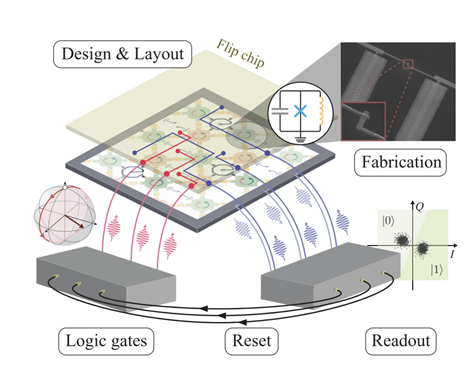Facilities
The High Performance Computing and Network Facilities subprogram supports the operations of forefront computational and networking user facilities to meet critical mission needs. ASCR operates three high performance computing (HPC) user facilities: the National Energy Research Scientific Computing Center (NERSC) at Lawrence Berkeley National Laboratory (LBNL), which provides high performance computing resources and large-scale storage to a broad range of SC researchers; and the two Leadership Computing Facilities (LCFs) at Oak Ridge National Laboratory (ORNL) and Argonne National Laboratory (ANL), which provide leading-edge high performance computing capability to the U.S. research and industrial communities. ASCR’s high performance network user facility, the Energy Sciences Network (ESnet), operated by LBNL, delivers highly reliable data transport capabilities optimized for the requirements of large-scale science.
High End Computing (HEC)
ASCR HEC facilities are among the most advanced computers in the world.
High end computer (HEC) or ‘supercomputer’ describes a machine that connects a very large number of processors – the part that performs most of the calculations - using hardware and software that lets the processors work together quickly and efficiently. ASCR HECs can carry out thousands of trillions of calculations each second, that’s 10,000 times more calculations each second then there are neurons in the human brain.
ASCR HEC facilities are comprised of two classes of systems – high performance and leadership computers. High Performance Computing systems are computers with performance that substantially exceed systems commonly available for advanced scientific and engineering applications. Leadership Computing systems are high end computers that are among the most advanced in the world for solving scientific and engineering problems.
Unique Characteristics of DOE HEC Facilities
Science – Mission ASCR HEC resources are world-class scientific instruments and are part of the DOE user facility network. As part of the DOE Office of Science mission, ASCR HEC facilities are built and managed to support researchers and maximize scientific impact.
Usability – ASCR facilities couple HEC resources with large-scale, state-of-the-art storage, networking and software tools essential for computational scientific research. Additionally, system software, communications, math libraries and applications must scale to meet the extreme size of the HEC. Because ASCR facilities are unique in the world, ongoing education, training, advice, and support are necessary for scientists to effectively use these first-of-a-kind supercomputers.
Reliability – Scientific applications may use thousands of HEC nodes simultaneously for hours to months to solve problems, making rigorous reliability demands of the HEC system. ASCR HEC systems run 24/7 and historically have maintained over 90% availability.
Access – Like other DOE user facilities, ASCR HEC facilities are accessible to researchers through an open peer-review process. Once permitted access, users schedule time, run experiments, analyze results, and interface with facility support staff that aid researchers in the scientific discovery process.
Staff – One of ASCR facilities’ greatest resources is the highly trained, specialized national laboratory staff dedicated to supporting world-class science by optimizing HEC performance, and training and educating users. Learn more about ASCR HEC facilities.
High Performance Computing is critical to advancing scientific discovery.
Powerful compute speeds enable researchers to understand scientific questions at unprecedented levels. From detailed atomic level simulations to massive cosmological studies, researchers use HEC to probe spaces inaccessible by any other experimental method. Scientific insights from supercomputers have driven forward research and technology across industrial sectors and disciplinary fields. Examples include aerospace engineering, drug development, climate science, genomics, and exploration of fundamental particles that make up our universe. From industry to academia, the scientific need for compute power pushes the limits of current supercomputers and continues to drive innovation and development for future high performance computers.
High Performance Scientific Network
ASCR’s high performance scientific network facility is among the fastest in the world.
High performance network describes a telecommunication system with hardware and software components that enable rapid and robust information communication between end-points. Digital information can be measured in units called ‘bits’, and high performance networks can accurately communicate information on the order of 100 billion bits each second (100 Gbits/sec). If the ASCR network was communicating one bit per star, it could communicate our galaxy’s worth of stars in ~2 seconds.
ASCR’s network facility is a scientific network. Scientific networks are communication systems tailored to carry scientific data and to address the special demands that are entailed. For example, transferring large scientific datasets creates special demands on a network, such as zero-tolerance for information loss (packet loss) and lower tolerance for slow firewalls (protection points at a connection between two different network systems).
Unique characteristics of ASCR’s high performance scientific network.
ASCR’s high performance scientific network is dedicated to making scientific progress completely unconstrained by the physical location of instruments, people, computational resources, or data. The network delivers unparalleled infrastructure, capability, and tools uniquely designed to address the special needs of scientific data movement. The footprint includes major scientific institutions including the DOE national laboratories and CERN (Geneva, Switzerland). ASCR’s network and its users are supported by a highly-trained and innovative staff constantly working to create a more robust network and tool suite for scientific data movement. Learn more about how ASCR’s high performance network and support tools accelerate scientific discovery. Read More »
High performance networks advance scientific discovery.
Large collaborations are using large experimental datasets to solve the toughest scientific challenges, but success requires fast and effective communication of scientific data. Due to the detection power of leading experimental devices, such as the Large Hadron Collider (CERN, Switzerland) or the SLAC National Accelerator Laboratory (Stanford University, CA), an experimental facility may need to communicate a trillion or more bits each day. As science grows, it continues to push the limits of information communication and drives innovations and development for future high performance scientific networks.




